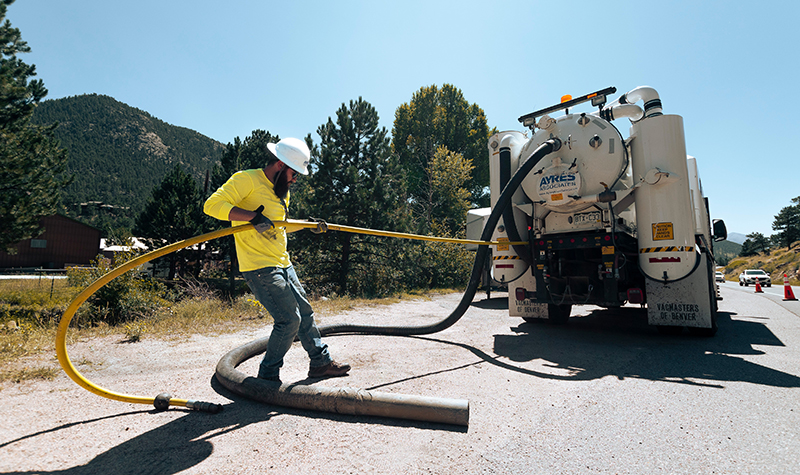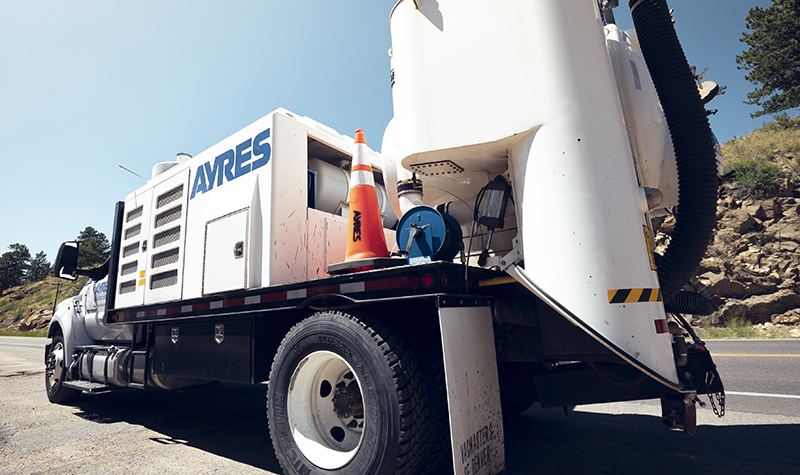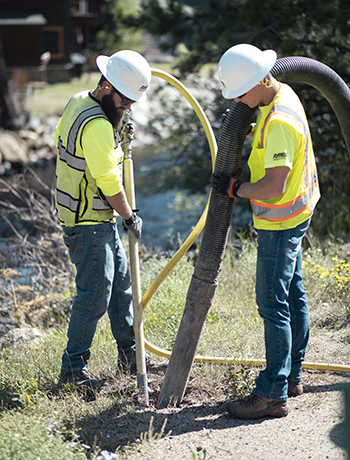Subsurface Utility Engineering: A Wise Investment

By Kasey Hayes
In today’s world, building and rebuilding are facts of life – from wider roads to larger housing complexes, bigger buildings, and revitalized downtowns. While these changes to roads and buildings are highly visible, within every project is an often-underemphasized component – the utility infrastructure.

About the Expert:
Kasey Hayes is a subsurface utility engineering (SUE) technician who is responsible for outside plant (OSP) engineering design, engineering computations, communications system analysis, and review of design and equipment installations. Kasey has well over a decade of experience in designating underground utilities, including damage prevention and on-call. Check out our SUE services page for more information.
Utility infrastructure includes potable water, sanitary sewer, gas, electricity, telecommunications, and stormwater conveyance. As our world grows, the demand for these services continues to intensify. These additional utilities have ramped up the stress on America’s rights-of-way, where most of these lines are buried in a complex web of pipes, conduits, and cables. A utility strike by a contractor during construction can cause significant disruptions and pose the threat of injury or even death.
With the importance of utility locating, many states, including Colorado, have recently adopted their own set of rules regarding subsurface utility engineering, otherwise known as SUE.
What Is Subsurface Utility Engineering?
Traditionally, trying to prevent these kinds of problems is addressed when the contractor calls 811 or goes online to request a free utility locate request. All publicly owned utilities would then be marked with paint and flag in the requested “dig area.” SUE services differ in that they are performed prior to construction during the design phase to help determine utility conflicts, which can help mitigate those conflicts in a controlled manner rather than during construction, which reduces delays, downtime, and higher costs. However, more recently clients are using SUE to get more reliable information about where utilities lie beneath the surface of their projects during design and construction. Using SUE services helps projects stay on schedule and within budget and protects the safety of workers and the public.
 In a nutshell, SUE data is good insurance. It confirms what is known about a site (or what is unknown), and it also could be the most valuable, cost-effective, and accurate method to make sure a project is built safely, on time, and within budget. For these reasons SUE has increased in popularity as a proactive method for engineers and contractors to avert risks associated with construction projects.
In a nutshell, SUE data is good insurance. It confirms what is known about a site (or what is unknown), and it also could be the most valuable, cost-effective, and accurate method to make sure a project is built safely, on time, and within budget. For these reasons SUE has increased in popularity as a proactive method for engineers and contractors to avert risks associated with construction projects.
Where Is SUE Used?
While many contractors and engineers rely on utility locating services for information during design and construction, this method is changing as each state has its own set of rules regarding utility locating. One-call locator services are typically conducted without a complete picture of all the utilities at a construction site, are often conducted by multiple people working for different utility owners, are conducted with limited pieces of equipment, and are only capable of providing an approximate and incomplete picture of the utilities at a site. The full use of SUE includes the depiction of the underground utilities on design plans and sheets, evaluation of conflicts, and conflict abatement during the design phase.
 Many studies have determined that investing in this work during design delivers savings by reducing construction delays and claims. This distinction has led the American Society of Civil Engineers (ASCE) to standardize SUE practices nationally with the creation of its “Standard Guideline for the Collection and Depiction of Existing Subsurface Utility Data” (CI/ASCE 38-02). This move has been endorsed by the Federal Highway Administration (FHWA) and the American Association of State Highway Transportation Officials (AASHTO).
Many studies have determined that investing in this work during design delivers savings by reducing construction delays and claims. This distinction has led the American Society of Civil Engineers (ASCE) to standardize SUE practices nationally with the creation of its “Standard Guideline for the Collection and Depiction of Existing Subsurface Utility Data” (CI/ASCE 38-02). This move has been endorsed by the Federal Highway Administration (FHWA) and the American Association of State Highway Transportation Officials (AASHTO).
SUE services are being implemented as standard procedures during the design phase of roadway projects by state roadway departments in Florida, Texas, North Carolina, Virginia, Maryland, Georgia, Ohio, New Jersey, and Colorado. In fact, as of August 2018, SUE surveys are now required for most public civil engineering projects in Colorado. The purpose is to shift the workflow to the start of project design to increase public safety and reduce utility-related costs and risks throughout design and construction. The law requires that the work be completed under the responsible charge of a licensed professional engineer.
How Does SUE Work?
SUE data is collected in what is known as “quality levels” that vary by the level of detail and accuracy provided. These are:
- Quality Level D: Reviewing existing utility records and as-built plans.
- Quality Level C: Visual survey of aboveground structures and utilities.
- Quality Level B: Uses surface geophysical methods such as electromagnetic locating and ground penetrating radar to designate the existence and horizontal position of all utilities, known and unknown. Referred to as “Designating.”
- Quality Level A: Providing information for the precise plan and profile mapping of underground utilities through the nondestructive exposure of underground utilities through vacuum excavation. Referred to as “Locating.”
What Are the Benefits of Acquiring SUE Data?
As more states start enacting similar SUE standards, it’s apparent that this type of work is seen as a benefit to clients and the public. The money spent up front is being viewed as worth the investment. An FHWA-Purdue University study in 1999, using a sample of 71 projects in four states, concluded that acquiring SUE data for construction projects provided a return of $4.62 for every $1 invested. Factoring in today’s costs for construction delays, lawsuits, and disrupted services, the return on investment could be much higher.
For detailed information about subsurface utility engineering, visit our SUE services page.

Post a comment: